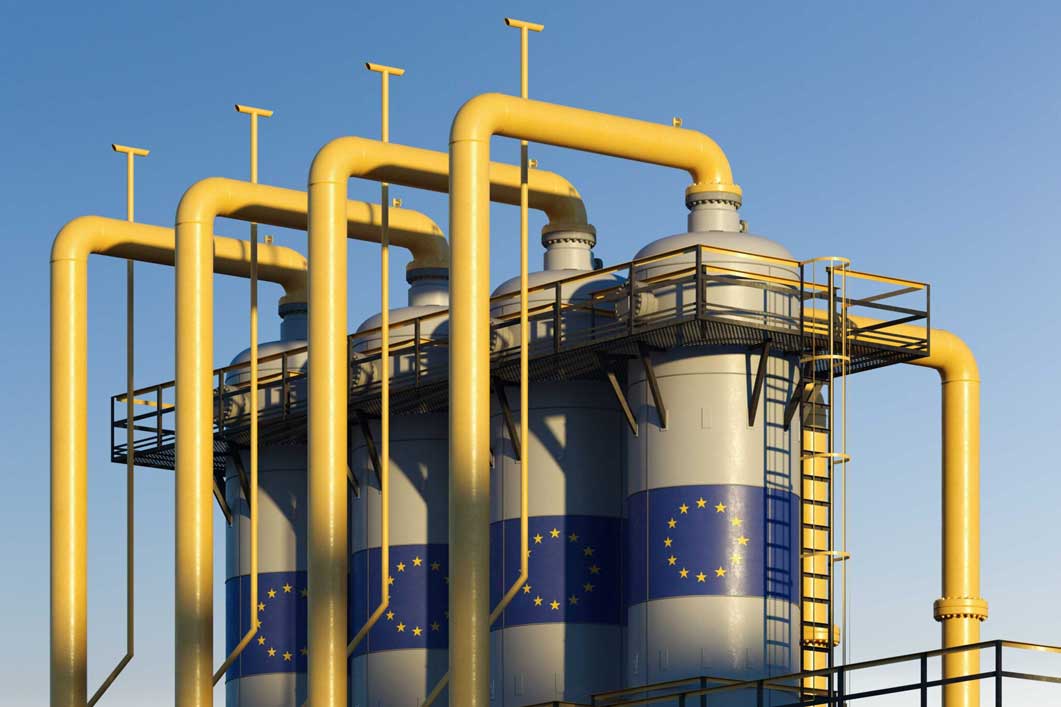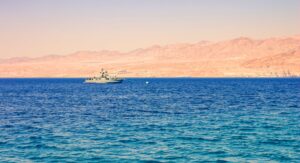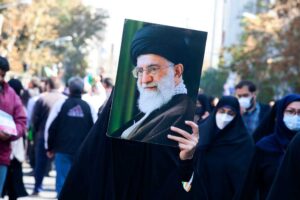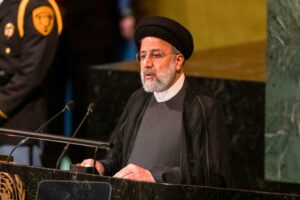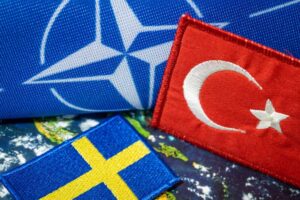The Eastern Mediterranean has gained a newfound relevance as it could enhance European energy security and diversify its supply chains.
Competition over the energy resources of the Eastern Mediterranean did not start with Russia’s war in Ukraine. Since 2009, governments and energy companies have increasingly looked to the area with high hopes and ambitions for turning it into a major gas export hub. Following the two gas crises in 2006 and 2009, the European Union (EU) was considering the eastern Mediterranean’s potential to become an alternative to Russia and other North African exporting countries that were going through social unrest following the Arab Spring. Despite this expectation, several key factors (e.g., low infrastructure interconnectivity, economic and political constraints) have hindered the development of such potential.[i] So far, however, the development of gas resources has yielded positive consequences mainly for the regional producing countries.
Whilst only a limited number of countries (Egypt and Israel) is relevant in terms of gas production, other countries (Cyprus, Turkey, Lebanon and Jordan) may determine and contribute to the future role of the East Med as a gas export hub. Regional cooperation over the exploitation of these resources is a key determining factor for the future energy developments.
Egypt has become the cornerstone of East Med gas exports to the EU.
With the energy crisis and the political confrontation between Russia and the EU following the former’s invasion of Ukraine, the Eastern Mediterranean has gained a newfound relevance as it could enhance European energy security and diversify its supply chains. In this sense, Europeans have started to engage and expand their relations with key countries in the area. In April 2022, the Italian energy company Eni signed a deal with the Egyptian company EGAS for up to 3 billion cubic meters (bcm) of LNG in 2022 for Italy and Europe. In the same vein, in June 2022, the European Commission, Egypt and Israel signed a trilateral memorandum of understanding aimed at increasing energy imports from these countries to the EU, especially using Israeli gas via Egypt’s liquified natural gas (LNG) export infrastructure.
Since the discovery of the giant Zohr gas field in 2015, Egypt has become the cornerstone of East Med gas exports to the EU. Importantly, it holds the only exporting infrastructure facilities in the area, the two LNG export terminals: Idku (with a capacity of 10 bcm) and Damietta (with a capacity of 7 bcm). Over the past two years, Egypt has increased its exports to Europe encouraged by record-high gas prices. In 2021, Egypt exported 9 bcm, with 80 per cent being imported by the EU. By 2022, however, it exported 11.2 bcm, of which 90 per cent went to Europe.[ii] Given high European gas prices, Egypt has prioritised LNG exports—resulting in a growth of oil consumption in the domestic power sector. Egypt has increased its gas output and has major plans to expand the production from its offshore fields with companies Eni, BP and Chevron among the key players.
The most important breakthrough is the recent Israel-Lebanon deal.
Despite this important contribution, the role of East Med gas within the European gas markets is still quite modest volume-wise compared to its potential and other suppliers. Moreover, there are currently limited export options and countries need to find common strategies to create and foster new export routes. Nonetheless, the region has experienced some major developments in the political and energy spheres in 2022, which could yield positive consequences for the future role of East Med energy resources and export routes.
Probably the most important breakthrough is the recent Israel-Lebanon deal, brokered by the United States. The two countries managed to reach an agreement over their maritime borders after lengthy discussions, despite the fact that they do not recognise each other’s governments. This deal is particularly relevant for the East Med area because it represents a positive precedent for other countries and disputes. The area is characterised by several maritime disputes, such as the ones around Cyprus and the Greek islands, which have both enflamed the geopolitical competition in the region and hindered the development of its energy resources. Yet, the regional competition does not strictly pertain to energy resources, which are only a catalyst rather than the real object of such confrontation. Moreover, the Israel-Lebanon deal also marks the comeback of the US as a mediator in the region. This scheme may be replicated for other disputes in the area.
Political developments, just like the deal struck between Israel and Lebanon, could pave the way for major developments in the energy sphere even though the outcomes and consequences of the deal will only be visible in the long term. Indeed, even though it does not correspond to a peace agreement, the Israel-Lebanon deal allows for the exploration and exploitation of the area’s hydrocarbons. Under the deal, Lebanese rights over part of the Qana field are recognised. These resources could be particularly beneficial for Beirut in terms of future revenues for its cash-strapped government and gas volumes.
Lebanon, importantly, consumed a modest volume of imported gas during the period 2009-2010 and it heavily relies on oil imports. Following the deal, France’s TotalEnergies announced that it is working on drilling the Qana Prospect on Lebanon’s Block 9, aiming to complete the drilling as soon as 2023.[iii] The ability to attract further international investment, coupled with necessary government cohesion and stable regulatory framework, will determine Lebanon’s efforts to explore its own offshore water for the domestic and international gas market.
In this complex puzzle, the last, but not least, piece is Cyprus.
The deal also helps reduce tensions around Israel’s offshore resources at a time when Israel is looking to expand and preserve its relevance in the regional energy architecture and capitalise on surging European demand for non-Russian gas. Not only does Israel have several projects to expand domestic gas output from existing fields, but it is also seeking to discover and tap further into its resources. In December 2022, Israel’s outgoing energy minister launched an offshore bid for multiblock “zones,”[iv] bordering Lebanon, Cyprus and Egypt, as one of her last acts in office.
This represents a significant shift from Israel’s previous focus on securing volumes for the domestic market. Indeed, following the discovery of its gas fields and after long negotiations, Israel set limits on how much gas could be sold abroad, earmarking nearly 60 per cent of its reserves for domestic use. That was motivated by the need to increase its energy security. Israel seeks to seize today’s opportunities produced by Russia’s invasion of Ukraine. To do so, Israel should leverage its renewable energy sources (which are expected to comprise 30 per cent of Israel’s power generation by 2030[v]) and relax its current limit on gas exports. This would free up more of Israel’s gas reserves, which range from 850 to 1000 bcm according to different estimates,[vi] for export and monetisation.
In this complex puzzle, the last, but not least, piece is Cyprus. It is one of the epicentres of geopolitical tensions in the region as Turkey does not recognise its sovereignty over its offshore resources. The Cyprus case reflects the mismatch between energy ambitions and realities as well as the geopolitical tensions that characterise the region. The discovery of the Aphrodite gas field offshore Cyprus was welcomed as promising a bright future both for the region and the country, which has no domestic gas consumption. Nonetheless, geopolitical tensions and confrontation with Turkey as well as limited discoveries cooled down the enthusiasm. In all likelihood, this motivated the exclusion of Cyprus from the Memorandum of Understanding (MoU) signed by the European Commission and other regional producing countries. Though Cyprus’ energy ambitions have been historically frustrated in this way, they have only been further complicated by recent discoveries. In 2022, Eni and TotalEnergies discovered two gas fields offshore Cyprus: Cronos-1 in August 2022 and Zeus-1 in December 2022. The two discoveries further enhanced the potential of Cyprus’ offshore energy resources.
Countries will need to cooperate to fully harness their energy resources.
Nevertheless, Cyprus’ success will depend on Turkey’s stance regarding the former’s status and sovereignty to exploit its offshore resources. Furthermore, Turkey has also opposed one of the main export options from the region: the EastMed pipeline. The pipeline, with a capacity of 10 bcm, would connect the Leviathan Basin to Europe via Cyprus and Greece bypassing Turkey and excluding it from the regional energy architecture. Moreover, Turkey has been promoting itself as a gas corridor between Asia and Europe; thus, this pipeline would undermine this goal and narrative.
The political disagreements over Cyprus’ sovereignty and right to exploit offshore resources are well known. Therefore, countries will need to find ways to engage with Turkey, reduce political risks and find common strategies. There have been positive developments such as the full restoration of diplomatic ties between Turkey and Israel and the rapprochement between Ankara and Cairo.
Countries will thus need to cooperate to fully harness their energy resources. Yet, there may be some disagreements over export routes that could hinder this development. Israel lacks the infrastructure to export its gas out of the region and it will need to decide what option to pursue. Since 2020, Israel has exported its gas to Egypt, contributing to Egypt’s role as a gas exporter in the region. This scheme is also outlined by the trilateral MoU between the European Commission, Egypt and Israel. Producing countries, however, have not agreed on future export routes. Egypt has attempted to position itself as an energy hub in the area thanks to its two LNG export terminals, which have a combined capacity of 17 bcm.[vii] This means that despite ever-growing gas export volumes from Egyptian shores, Cairo still has approximately 6 bcm of spare export capacity.
At the same time, the EastMed gas pipeline has gained newfound relevance in the aftermath of the Russian invasion of Ukraine. Despite high investment costs (approximately €6 billion) and engineering challenges, this project would allow Europe to import 10 bcm: overcoming the competition with other importing countries on the LNG market.[viii] The project would also be able to transport hydrogen as well in order to be in line with Europe’s climate objectives. The pipeline has been enlisted in the EU’s Projects of Common Interests (PCI) list since 2013 and was reconfirmed in the fifth EU PCI list at the end of 2021.
Renewable resources are largely untapped in the region.
However, the energy developments are not only limited to natural gas. Despite the challenges caused by today’s crisis, energy transition remains a priority for many governments. Countries are also undertaking important steps to position themselves in the future energy landscape. Renewables have gained relevance both for maximising gas export volumes and decarbonising the domestic sector. Given the region’s low interconnectivity, countries are considering projects on electricity interconnectors, which could enhance energy interconnectivity, spur renewable deployment and strengthen the relationship within the region and with the EU.
In the same way, Egypt is trying to position itself as an energy hub. It is in talks with Greece to connect the two countries’ grid via a 3 Gigawatt (GW) subsea cable (the Gregy Interconnector). The two countries signed a MoU in October 2021 for the project,[ix] which will take about 8 years to construct once financing is secured. Simultaneously, Egypt is also working on the construction of EuroAfrica Interconnector—linking Africa to Europe via a 2 GW subsea cable. On this project, Egypt signed a MoU with Cyprus. This interconnector would benefit from the construction of the EuroAsia Interconnector, a 1 GW subsea cable that will link Cyprus and Crete at an estimated cost of €1.5 billion.[x] The start of the construction stage of the first leg of the EuroAsia Interconnector (Cyprus-Crete), which is a European PCI under the 5th Union List, was officially inaugurated in October 2022, representing a positive step forward. The second leg of the interconnector will connect Cypriot and Israeli grids (costing a further €1 billion) once the first leg is completed in 2027.[xi]
Despite great enthusiasm, renewable resources are largely untapped in the region. Though both Egypt and Israel have launched ambitious plans, the region is still far away from having enough renewable capacity to both decarbonise its domestic sectors and export clean energy. Currently, Egypt is an outlier: it holds a total renewable capacity of 6.2 GW, which corresponds to 10.4 per cent of total power capacity. In contrast, renewables account for less than 3 per cent of total electricity generation in nine of the Middle East and North Africa region’s ten hydrocarbon producing economies.[xii] Egypt has been one of the largest beneficiaries of Europe’s climate investments. For example, the European Bank for Reconstruction and Development (EBRD) pledged up to $1 billion for renewable projects in the country. Scaling up renewable installations, countries could also develop hydrogen projects in order to contribute to the decarbonisation of their domestic sector and build a new energy partnership with Europe in line with climate ambitions.
In this evolving landscape, the Eastern Mediterranean’s energy resources are gaining relevance. Yet, countries have a long way to go to find common strategies, resolve maritime disputes and overcome political confrontation to fully harness such energy potential for both the region and Europe.
[i] Pier Paolo Raimondi, “Eastern Mediterranean Energy Resources between Energy Security and Energy Transition: A Regional Perspective”, Istituto Affari Internazionali, May 2022. https://www.iai.it/sites/default/files/iaip2211.pdf
[ii] Dania Saadi, “Egypt boosts LNG exports by 14% in 2022, more volumes go to Europe: minister”, S&P Global Commodity Insights, 27 Nov 2022. https://www.spglobal.com/commodityinsights/en/market-insights/latest-news/natural-gas/112722-egypt-boosts-lng-exports-by-14-in-2022-more-volumes-go-to-europe-minister
[iii] “Lebanon: TotalEnergies Mobilized to Explore Block 9 in 2023”, TotalEnergies, 12 Dec 2022. https://totalenergies.com/media/news/press-releases/lebanon-totalenergies-mobilizes-explore-block-9-2023
[iv] “The Ministry of Energy Has Launched the 4th Offshore Bidding Round for Natural Gas Exploration Offshore Israel”, Ministry of Energy, 13 Dec 2022. https://www.gov.il/en/departments/news/press_131222
[v] “NDC Registry”, United Nations Climate Change. Israel’s Nationally Determined Contribution. https://unfccc.int/NDCREG
[vi] Tom Pepper, “Israel Weighs Gas Export Policy Reforms”, in Energy Intelligence, 5 July 2022. www.energyintel.com/00000181-cda7-d598-a183-fdafbbdb0000
[vii] “The LNG Industry: GIIGNL Annual Report 2022”, The International Group of Liquefied Natural Gas Importers, 5 May 2022. https://giignl.org/wp-content/uploads/2022/05/GIIGNL2022_Annual_Report_May24.pdf
[viii] Pier Paolo Raimondi, “Eastern Mediterranean Energy Resources between Energy Security and Energy Transition: A Regional Perspective”, Istituto Affari Internazionali, May 2022. https://www.iai.it/sites/default/files/iaip2211.pdf
[ix] “Undersea power cable to connect Egypt to Europe via Greece”, AfricaNews, 15 September 2022. https://www.africanews.com/2022/09/15/undersea-power-cable-to-connect-egypt-to-europe-via-greece/
[x] “Commission participates in launch of EuroAsia Electricity Interconnector”, Directorate-General for Energy, 14 October 2022. https://commission.europa.eu/news/commission-participates-launch-euroasia-electricity-interconnector-2022-10-14_en
[xi] Apostolis Tomaras “Ending Cyrpus’ energy isolation”, KNews,12 October 2022. https://knews.kathimerini.com.cy/en/news/ending-cyprus-energy-isolation
[xii] Ali Al-Saffar, Brent Wanner “How producers in the Middle East and North Africa can free up more natural gas for exports”, International Energy Agency, 25 May 2022. https://www.iea.org/commentaries/how-producers-in-the-middle-east-and-north-africa-can-free-up-more-natural-gas-for-exports

